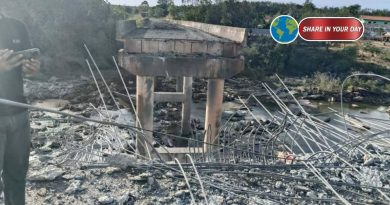US Seeks to Build “New Gaza” Across Half the Strip Under Israeli Control, but Encounters Gulf Resistance
Meta Description:
The United States is exploring a bold vision to rebuild the Gaza Strip and has offered donor countries in the Gulf region a plan that would locate new housing and infrastructure for up to one million Palestinians on the eastern half of Gaza—territory currently under the control of the Israel Defence Forces (IDF).
Under the scheme briefed by US officials and Arab diplomats, the “new Gaza” concept would involve:
Building approximately half a dozen residential zones on the eastern side of what is being called the “Yellow Line”—the boundary established when the IDF withdrew to that line at the start of the current cease-fire agreement.
Shifting about half the population of Gaza—around one million people—into those newly constructed areas within around two years, even if the IDF has not yet completed its withdrawal.
Deploying an International Stabilization Force (ISF) to secure the territory and oversee the post-war environment, in parallel with disarming the Hamas organisation.
Why the Pushback?
Despite the size and ambition of the plan, it has encountered resistance and practical concerns:
Some Gulf donor states—key to financing and supporting reconstruction—are sceptical about the feasibility of relocating such a large number of Palestinians into territory still under Israeli control. One Arab diplomat remarked that the notion “they’ll be willing to move to live under Israeli occupation and be under control of the party they also see as responsible for killing 70,000 of their brethren is fantastical.”
The ISF proposal has drawn objections. Several countries are willing to contribute troops only if backed by a clear United Nations mandate or a negotiated agreement that includes the disarmament of Hamas.
Humanitarian agencies raised concerns about earlier iterations of the plan (e.g., “humanitarian belt” along the Yellow Line) that were developed by the US-led Civil-Military Coordination Center. That version reportedly did not get off the ground after pushback from humanitarian actors.
Key Stakes and Challenges
Control & Governance: Israel retains control of roughly 53 percent of Gaza under the current arrangement, though the plan envisions IDF withdrawal later. That timetable is contingent on success of the ISF and disarmament of Hamas.
Population Movement: Relocating one million people—around half the Strip’s population—would be logistically and politically fraught. The timeframe of two years is described by diplomats as “highly unrealistic.”
Donor Confidence: Gulf states are attempting to reconcile their desire not to be sidelined by US-led initiatives with their concerns about supporting a process that could entrench Israeli control and undermine Palestinian agency.
The Times of Israel
International Legitimacy: A UN Security Council resolution to set up the ISF is reportedly being prepared. Its approval could be key to giving legitimacy and buy-in from troop-contributing states.
Outlook
The proposed “new Gaza” model reflects the US ambition to move quickly on reconstruction, even while formal final agreements on governance remain incomplete. Yet the pushback signals that major donors and regional states are not yet fully aligned. The coming weeks—particularly the White House meeting with the Saudi Crown Prince and any UN resolution—may prove decisive in determining whether the plan gains traction or stalls





